| תוכן עניינים |
Title page
Table of Contents
Part I. Pediatric Acute Care
Chapter 1. Emergency and Critical Care Management
- Approach to the Unresponsive Child
- Management of Shock3,5,7,12,13
- Management of Common Emergencies
- Critical Care Reference Data
Chapter 2. Traumatic Injuries
- Components of the Trauma Assessment
- Head and Neck Trauma
- Concussion
- Intrathoracic, Abdominal, and Pelvic Trauma16
- Limb and Long Bone Trauma16
- Dental Trauma
- Ophthalmologic Trauma16
- Animal Bites16
- Burns27,28
- Nonaccidental Trauma16
Color Plates Chapter 2
Chapter 3. Toxicology
- Initial Evaluation
- Toxidromes
- Ingestions and Antidotes
- Acetaminophen Overdose8
- Lead Poisoning9
- Web Resources
Chapter 4. Procedures
- General Guidelines
- Ultrasound for Procedures2a
- Neurologic Procedures: Lumbar Puncture3-5
- Otolaryngologic Procedures
- Cardiovascular procedures
- Pulmonary Procedures
- Gastrointestinal Procedures
- Genitourinary Procedures
- Musculoskeletal Procedures
- Skin/Dermatologic Procedures
- Online Content
Part II. Diagnostic and Therapeutic Information
Chapter 5. Adolescent Medicine
- Theory of Adolescence/Introduction
- Structural Factors Impacting Adolescents and Their Health
- Confidentiality
- Health Maintenance Elements Unique to the Adolescent Patient
- Sexual Health
- Transitioning Adolescents into Adult Care94
- Web Resources
Chapter 6. Analgesia and Procedural Sedation
- Types of Pain
- Pain Assessment
- Analgesics5
- Patient-Controlled Analgesia (PCA)
- Opioid Tapering
- Procedural Sedation5,14–17,25–27
- Web Resources
Chapter 7. Cardiology
- Physical Examination
- Electrocardiography
- Congenital Heart Disease
- Acquired Heart Disease
- Imaging
- Procedures
- Common Cardiac Complaints
- Exercise Recommendations for Patients with Congenital Heart Disease
- Lipid Monitoring Recommendations
- Cardiovascular Screening
- Web Resources
Chapter 8. Dermatology
- Evaluation and Clinical Descriptions of Skin Findings
- Vascular Anomalies1
- Infections
- Hair Loss (Fig. 8.22, Color Plates )
- Acne Vulgaris
- Common Neonatal Dermatologic Conditions (Fig. 8.21; Figs. 8.23 To 8.30, Color Plates)
- Autoimmune and Allergic Dermatologic Conditions (Figs. 8.32 To 8.38, Color Plates)
- Nail Disorders28
- Disorders of Pigmentation29
- Rashes of Unknown or Inflammatory Etiology
- Online Content
Color Plates Chapter 8
Chapter 9. Development, Behavior, and Developmental Disability
- Developmental Definitions1,2
- Guidelines for Normal Development and Behavior
- Developmental Screening and Evaluation of Developmental Disorders
- Specific Disorders of Development
- Longitudinal Care of Children with Developmental Disorders and Disabilities
- Transitions from Pediatric to Adult Care for Youth with Developmental Disabilities
- Social Determinants of Health and Adversity Significantly Impact Child Development, Attainment of Developmental Milestones, and/or Long-Term Health
- Web Resources
Chapter 10. Endocrinology
- Diabetes
- Thyroid Gland13-15
- Parathyroid Gland and Vitamin D22-24
- Adrenal Gland25-29
- Disorders of Sodium and Water Regulation35
- Growth35-37
- Sexual Development39-45
- Neonatal Hypoglycemia Evaluation51,52
- Additional Normal Values
- Web Resources
Chapter 11. Fluids and Electrolytes
- Introduction
- Fluid Resuscitation
- Fluid Removal
- Electrolyte Management
- Algorithm for Evaluating Acid-Base Disturbances9,20,21
Chapter 12. Gastroenterology
- Gastrointestinal Emergencies
- Conditions of the Gastrointestinal Tract
- Conditions of the Liver
- Pancreatitis36-38
- Web Resources
Chapter 13. Genetics: Metabolism and Conditions With Distinctive Appearance
- Metabolism1-8
- Newborn Metabolic Screening7
- Dysmorphology7,11-14
- Patterns of Genetic Conditions with Distinctive Appearance11,14
- Etiologies of Dysmorphic Features (FIG. 13.4)11,14,29
- Consent and Disclosure of Genetic Testing
- Web Resources
- Online Content
Chapter 14. Hematology
- Anemia
- Erythrocytosis12,48
- Neutropenia
- Leukocytosis12
- Thrombocytopenia and Impaired Platelet Function
- Thrombocytosis12
- Coagulation
- Blood Component Replacement
- Additional Resources
- Online Content
Chapter 15. Immunology and Allergy
- Allergic Rhinitis1-6
- Food Allergy7-18
- Drug Allergy19-21
- Immunodeficiency22-27
- Immunoglobulin Therapy28-34
- Immunologic Reference Values
Chapter 16. Immunoprophylaxis
- Common Types of Vaccines Administered to Children1
- Immunization Schedules
- Immunization Guidelines
- Postexposure Prophylaxis (Table 16.5)
- Special Patient Populations9
- Counseling and Communication About Vaccines 22-34
- Web Resources35-40
- Online Content
Chapter 17. Microbiology and Infectious Disease
- Common Neonatal and Pediatric Infections: Guidelines for Diagnosis and Initial Management
- Microbiology
- Antibiotic Therapy And Stewardship
- Antibiotic Stewardship
- Resistance in Common Organisms
- Exposures to Bloodborne Pathogens and Prophylaxis
Chapter 18. Neonatology
- Newborn Resuscitation
- Routine Newborn Care of a Term Infant
- Newborn Assessment
- Fluids, Electrolytes, and Nutrition
- Cyanosis in the Newborn
- Respiratory Diseases
- Apnea and Bradycardia
- Cardiac Diseases
- Hematologic Diseases
- Gastrointestinal Diseases
- Neurologic Diseases
- Urologic Disorders
- Retinopathy of Prematurity29
- Commonly Used Medications in the Neonatal Intensive Care Unit
- Web Resources
- Prenatal Assessment of Fetal Health
Chapter 19. Nephrology
- Urinalysis1: See Table 19.1
- Kidney Function Tests
- Blood Pressure (BP) and Chronic Hypertension6-11
- Urinary Tract Infections12-17
- Proteinuria19-21
- Hematuria19,24
- Acute Kidney Injury25,26
- Chronic Kidney Disease32,33
- Dialysis34-36
- Tubular Disorders
- Nephrolithiasis38-44
- Web Resources
Chapter 20. Neurology
- Neurologic Examination
- Neurologic Emergencies
- Chronic Or Gradually Progressive Conditions
- Web Resources
Chapter 21. Nutrition and Growth
- Assessment of Growth
- Management of Overweight and Obese Children
- Malnutrition in Infants and Children
- Re-Feeding Syndrome
- Nutritional Needs of Healthy Children
- Breastfeeding and the Use of Human Milk
- Enteral Nutrition
- Parenteral Nutrition
- Web Resources
Chapter 22. Oncology
- Nonspecific Symptoms in the Primary Care Setting (TABLE 22.1)1,2
- Pediatric Hematologic Malignancies (TABLE 22.2)3-4
- Pediatric Solid Tumor Malignancies (TABLE 22.3)3-4
- Pediatric Central Nervous System (CNS) Tumors3-4,7-10 (TABLE 22.4)
- Oncologic Emergencies4,11-18,19
- Commonly Used Chemotherapeutic Drugs, Associated Acute and Long-Term Toxicities (TABLE 22.5)
- Common Chemotherapy Complications and Supportive Care3,13
- Antimicrobial Prophylaxis in Oncology Patients20-22 (TABLE 22.7)
- Hematopoietic Stem Cell Transplantation (HSCT) (Also Called Bone Marrow or Stem Cell Transplantation)3,4,23
- Complications of HSCT3,4,23-26
- Cancer Survivorship5,27-29
- Fertility Preservation30
- Web Resources
- Online Content
Chapter 23. Palliative Care
- Introduction to Hospice and Palliative Medicine
- Communication and Decision-Making
- Care of the Dying Child
- Web Resources
Chapter 24. Psychiatry
- Overview
- Postpartum Depression
- Common Psychiatric Conditions of Children and Adolescents
- Psychiatric Emergencies
- Web Resources
Chapter 25. Pulmonology and Sleep Medicine
- Evaluation of Pulmonary Gas Exchange
- Pulmonary Function Tests (PFT)
- Asthma12-13,19
- Bronchiolitis20-27
- Bronchopulmonary Dysplasia (BPD)28-33
- Cystic Fibrosis (CF)34-46
- Obstructive Sleep Apnea Syndrome (OSAS)47-53
- Infant and Child Sleep53-54
- Brief Resolved Unexplained Event (BRUE)58-59
- Web Resources
- Online Content
Chapter 26. Radiology
- General Pediatric Principles
- Choosing the Right Study
- Head
- Neck and Airway
- Chest
- Heart
- Abdomen
- Genitourinary Tract
- Musculoskeletal
- Confirming Tube Placement and Line Insertion
- Web Resources
Chapter 27. Rheumatology
- Brief Overview of Clinical Characteristics of Rheumatologic Diseases
- Interpretation of Lab Studies Used In The Diagnosis and Monitoring of Rheumatologic Disorders1
- Medications: Mechanisms of Action, Toxicities, and Recommended Surveillance2 (SEE TABLE 27.4)
PART III. REFERENCE
Chapter 28. Blood Chemistry and Body Fluids
- Reference Values
- Evaluation of Body Fluids
- Conversion Formulas
Chapter 29. Biostatistics and Evidence-Based Medicine
- Biostatistics and Evidence-Based Medicine (EBM)1-3
- Biostatistics and Epidemiology
- Web Resources
PART IV. FORMULARY
Chapter 30. Drug Dosages
- Note to Reader
- Sample Entry
- Explanation of Breastfeeding Categories
- Explanation of Pregnancy Categories
- Nomogram and Equation for Body Surface Area
- Drug Index
Chapter 31. Drugs in Kidney Failure
- Dose Adjustment Methods
- Antimicrobials Requiring Adjustment in Kidney Failure
- Non-Antimicrobials Requiring Adjustment in Kidney Failure
Index
PEDIATRIC BLS HEALTH CARE PROVIDERS |

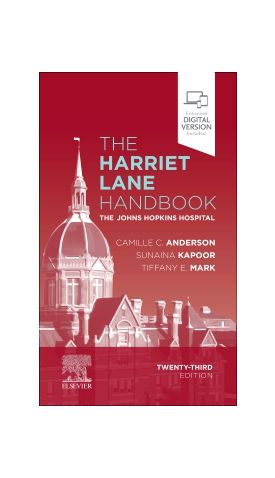




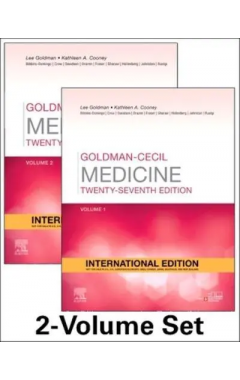
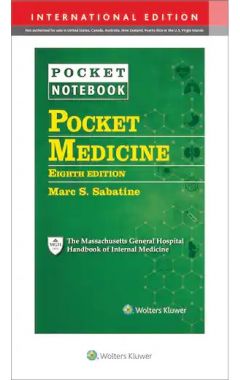
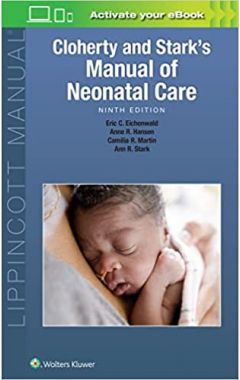


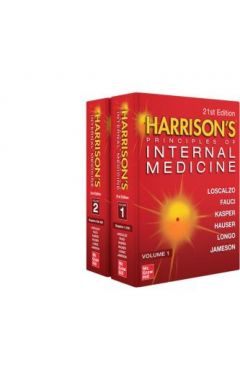
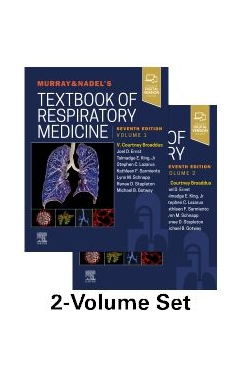

Login and Registration Form